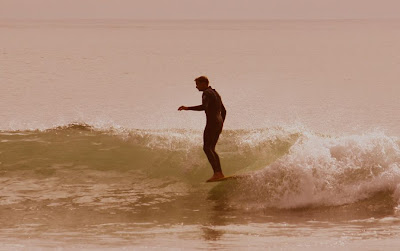Search This Blog
Friday, March 4, 2011
Schuyler is purging her Quiver!
Schuyler is selling off some of her old boards. Come by and take a look.
The first is one of the original Kookbox boards that Stu Kenson shaped for Joel. (One of Joel's personal boards)
The second is a Joel Tudor board for Sky.
Both are in impeccable condition.

Tuesday, March 1, 2011
KYLE LIGHTNER PHOTOGRAPHY
Pictures by: Kyle Lightner
Rider: Al KNost & Tanner Lee Prairie
Location: SanOnofre ( CA )
please visit: http://www.kylelightner.com/
iMAGE FROM THE PAST - KEYO SURFBOARDS
For the past 10 years John Gill (son in law of Denny Keogh) has been making boards as a hobby under the old Keyo label. With the interest surrounding John and his Keyo surfboards we have created this blog.
Keyo International is an endeavour to document Keyo past and present. It is a collective of contributions by friends with a broad range of interests, from surfers, skaters, bike riders, artists and musicians. Keyo International is without social or geographical restrictions, so everyone and anyone who share the same or similar interests is welcome to submit the content they would like to be posted on the blog.
Nathan Adams via Shawn Parkin
Naters doing his thing at Steamer Lane, during the Duct Tape.
Photos: Shawn Parkin
*This is Nate riding the 10' Nathan Adams model currently available at the shop.


Thursday, February 24, 2011
San Onofre State Beach
Elijah Gillis and Kameron Brown slaying the waves.
via Vimeo
Wednesday, February 23, 2011
7'9 Stepdeck - Almond Fine Surfboards
I've been inspired by some of the midlengths that I've seen in the water recently. Cyrus has been making himself some fun looking 2+1 boards. I traded boards in the water with Knost a few weeks ago, and really enjoyed the midlength he shaped for himself, and I haven't been able to shake these boards out of my head.
With that in mind, Griffin and I put our heads together the other day to come up with something new and interesting. We started with the original log rhythm template as our foundation (21 1/2" wide log) We narrowed it to 20 3/4"
I really wanted to keep plenty of volume and rail through the middle of the board (50/50), but then transition to a modern edge in the tail. I don't really like displacement hulls, personally, but I do like boards that glide and trim effortlessly, so the extra volume is intended to make this board glide like a log, but turn and respond like a midlength.
We ended up pulling in the nose, because we agreed we didn't need so much foam up there for what we wanted this board to do. So we actually used the tail template of the Pinwheel model (longboard we did for Japan) for the new nose. In order to further eliminate foam in the nose of the board, we gave it a step. A nice heart-shaped step.



Tuesday, February 22, 2011
Sunday, February 13, 2011
Friday, February 11, 2011
Another Bing Restoration
| Here is another great series of photo's of a Bing that had been well used! |
This is a very nice restoration of Bing #445 done by Dave Platt of Killcare Beach in the state of New South Wales on the east coast of Australia. Killcare Beach is 100 miles north of Sydney!
|
The owner of this board wanted to get back into surfing. He is the second owner. A mate of his purchased it while on a trip to the US. It was in pretty poor condition.
The original timber fin has been rebuilt and reset. All the old glass was removed. The timber was carefully sanded to remove all the excess glass and resin and to expose the inlay work The trailing edge had to be replaced. Western Red Cedar was used. Two sealing coats of resin were applied. Then two layers of 8oz laminated to one side with 10mm of cloth overhanging. This side was hotcoated. The overhang was used to mould the continuous rovings used to form the clear bead around the fin. Once cured the bead was sanded and two layers of 8oz were applied to the fin. Hotcoated and sanded ready for setting onto the board. Once the fin was set the board was hotcoated and sanded ready for the pigment work. The stringer and rails were masked and the pigment coats brushed on. I use a mixture of surfboard lam resin and neutral spray gelcoat. 75% resin 25% gelcoat and 3% surfacing agent. The gelcoat is designed to cling to vertical surfaces. This helps on the rails to minimise sagging and separation. The gelcoat ups the geltime slightly without having to use higher catalyst percentages. The board was sanded ready for glossing. Pinlines were masked and brushed on using the same resin/gelcoat mix. The pinlines were lightly sanded and the board was glossed. The gloss coats were wet and dry sanded with 600, 1200 and 1500 and the machine polished. |
|
|
|
|
|
|
|
|
|
|
























